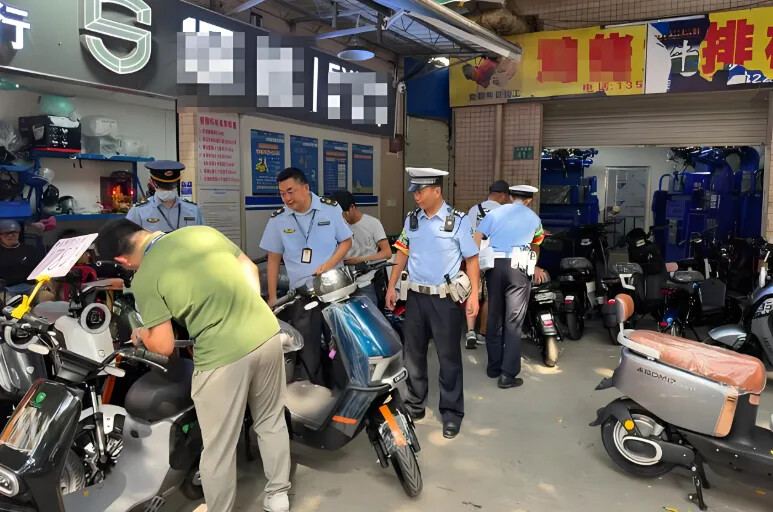On April 3, 2025, the National Fire and Rescue Administration held a regular press conference to report the progress of a nationwide campaign addressing safety hazards throughout the entire electric bicycle supply chain. It also announced that the revised Technical Specifications for the Safety of Electric Bicycles will officially take effect on September 1.
At the event, He Yaqiong, Director of the Department of Consumer Goods Industry at the Ministry of Industry and Information Technology (MIIT), emphasized, "Manufacturers must strictly comply with the new national standards." This statement signals a shift in the electric bicycle industry from rapid and unregulated growth toward a new phase of standardized and safety-oriented development.

I. Core Requirements of the New National Standards: Balancing Safety and Practical Needs
1. Fire Resistance and Material Restrictions
The new national standards impose stricter requirements on the fire safety of electric bicycles. All plastic components must now be flame-retardant, and the total weight of plastic parts must not exceed 5.5% of the vehicle's overall weight. This revision directly addresses the frequent electric bicycle fire incidents in recent years. According to data, since the implementation of rectification efforts, the number of electric bicycle fires per million vehicles per month has dropped from 5.6 to 2, effectively reducing fatalities caused by such incidents.

2. Battery Safety and Enhanced Braking Performance
The updated standards reinforce technical requirements such as overcharge protection and short-circuit prevention for batteries. Additionally, braking distances have been reduced to improve stopping performance. A new feature has also been introduced: real-time battery status monitoring with automatic alerts for abnormalities, further minimizing the risk of fire.
3. User-Friendly Design Adjustments
To improve user experience, the new standards remove the mandatory requirement for pedal-assist features, allowing consumers to decide whether to include them. For models using lead-acid batteries, the total weight limit has been increased from 55 kg to 63 kg, enabling longer range and reducing the need for frequent charging. Additionally, the new standards encourage the installation of rearview mirrors and turn signals to enhance riding safety.

II. Interim Results of the Full-Chain Rectification Effort
1. Significant Decrease in Fire Incidents
Since the launch of the rectification campaign, electric bicycle fire accidents have seen a substantial decline. From May to December 2024, a total of 9,175 electric bicycle fire incidents were reported nationwide, resulting in 6 deaths and 15 injuries, a year-on-year decrease of 46%, 90%, and 87% respectively. In the first quarter of 2025, there were 1,863 fire incidents, with 1 fatality and 3 injuries, representing a quarter-on-quarter drop of 12.4%, 75%, and 66.6% respectively.
2. Improved Intrinsic Safety Standards
Authorities including the Ministry of Industry and Information Technology and the State Administration for Market Regulation have developed and revised four mandatory national standards:
Technical Specifications for the Safety of Electric Bicycles
Safety Technical Specifications for Lithium-Ion Batteries for Electric Bicycles
Safety Requirements for Chargers of Electric Bicycles
Electrical Safety Requirements for Electric Bicycles
These standards have now been officially released, forming a more complete safety framework for electric bicycles and significantly improving product safety from the source. The revision of the mandatory standard Technical Specifications for the Safety of Electric Bicycles alone took eight months and involved cross-departmental collaboration. The process included over 70 research investigations, 160 technical discussions, 220 experimental verifications, the review of 54,000 public suggestions, and nearly 130,000 survey responses. Nearly 200 key indicators were revised and improved to strike a balance between strengthening safety requirements and meeting consumer usage needs.
3. Alleviation of Charging Infrastructure Shortages
At present, 245,000 out of 530,000 residential communities across China have completed the installation of charging facilities as required. More than 24 million new charging ports have been added, bringing the national total to approximately 36.1 million. Additionally, 410,000 communities now apply residential electricity rates for charging, accounting for 77.3% of all communities. A total of 180,000 charging facilities have received "Three-Zero" connection services (zero approval, zero investment, zero distance).

4. Gradual Elimination of Existing Risks and Hazards
As of the end of March this year, more than 57,000 retail stores nationwide have participated in the electric bicycle trade-in program, resulting in the replacement of approximately 3.861 million old vehicles with new ones. Additionally, 5,139 old lithium battery inspection and recycling stations have been established across the country, and over 642,000 lithium batteries have been scrapped and recycled.
5. Effective Crackdown on Counterfeit Sales and Illegal Modifications
Since the launch of the rectification campaign, authorities have conducted inspections on more than 870,000 electric bicycle manufacturers and retailers. Mainstream e-commerce platforms have been ordered to remove over 27,000 problematic listings. There have been 308 recalls involving electric bicycles and their components, affecting more than 300,000 products. Furthermore, over 150 criminal cases related to counterfeit production and illegal modifications have been investigated and prosecuted.
6. Public Awareness of Safety Significantly Improved
Local governments have carried out widespread publicity campaigns, organizing over 1,300 policy interpretation sessions and disseminating more than 2.2 million pieces of safety knowledge related to electric bicycles through various media and platforms. Additionally, more than 15 million safety alert messages have been sent to the public. As a result, public awareness of safety has significantly improved, and dangerous behaviors such as bringing electric bicycles indoors or charging them with unauthorized extension cords ("flying cables") have been notably reduced in residential communities.

III. Industry Transformation: Corporate Responsibility and Technological Upgrades
The Ministry of Industry and Information Technology (MIIT) has mandated that manufacturers strictly implement the new national standards and work toward increasing industry consolidation. By revising the Electric Bicycle Industry Regulatory Guidelines, the MIIT aims to screen and select compliant enterprises through a whitelist system and eliminate outdated production capacity in phases. Enterprises are expected to optimize their production processes by adopting advanced technologies such as liquid-cooled motors and digital battery systems, thereby promoting the development of smarter electric bicycles with extended range capabilities.
Director He Yaqiong emphasized: "Overall, the new standards have been designed to meet the needs of all stakeholders to the greatest extent possible. We hope electric bicycle manufacturers will take the lead in strictly enforcing the mandatory national standards, implementing the new standards without compromise. We look forward to seeing more safe, compliant electric bicycles on the road, serving the public in their everyday lives."

